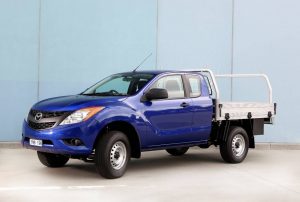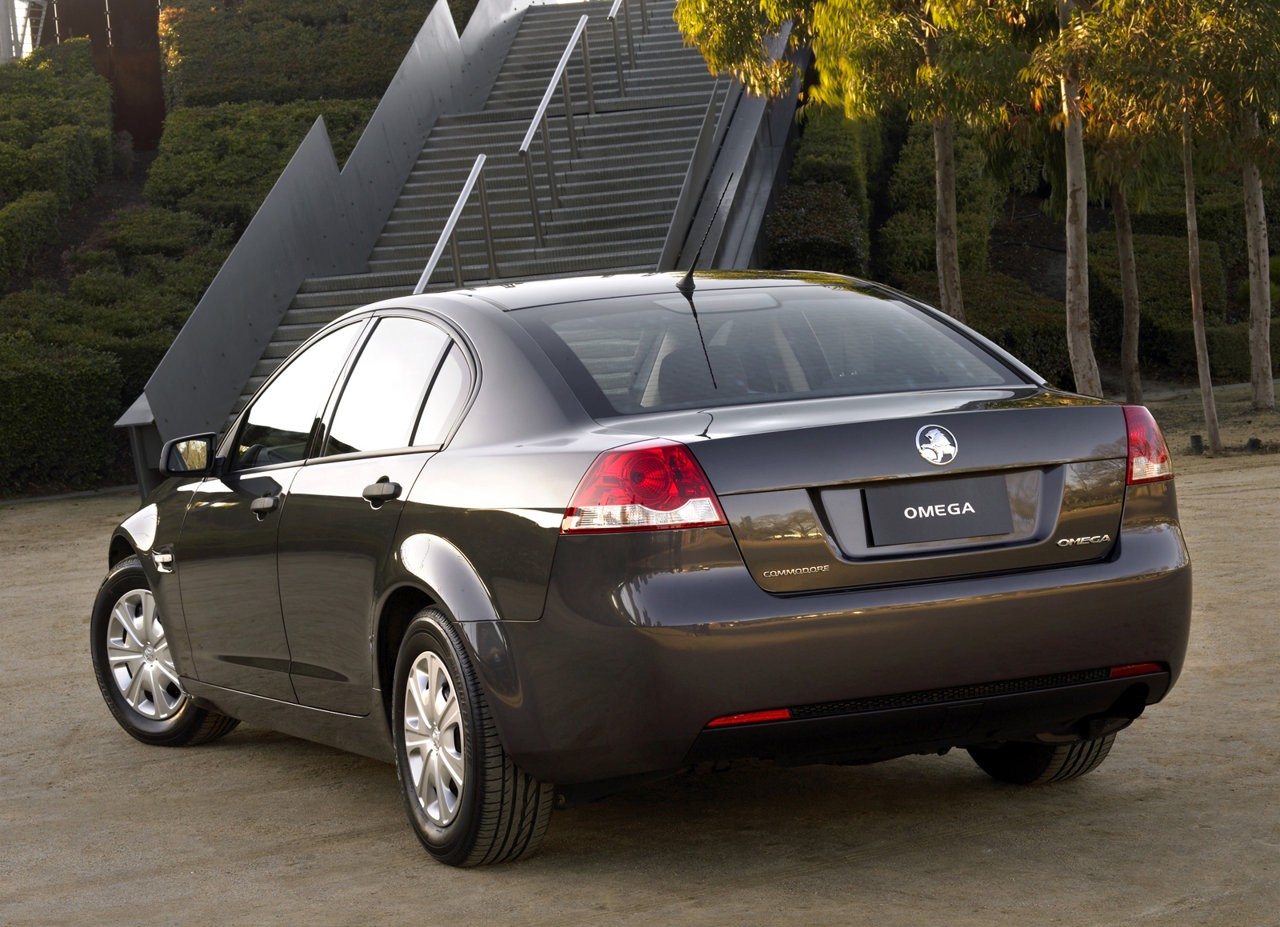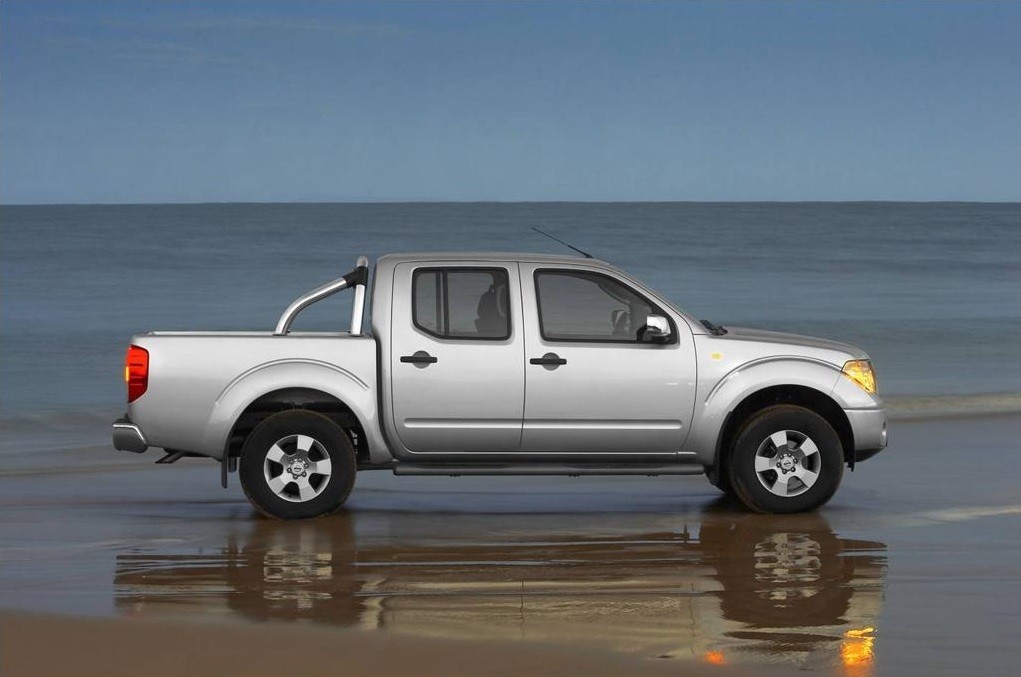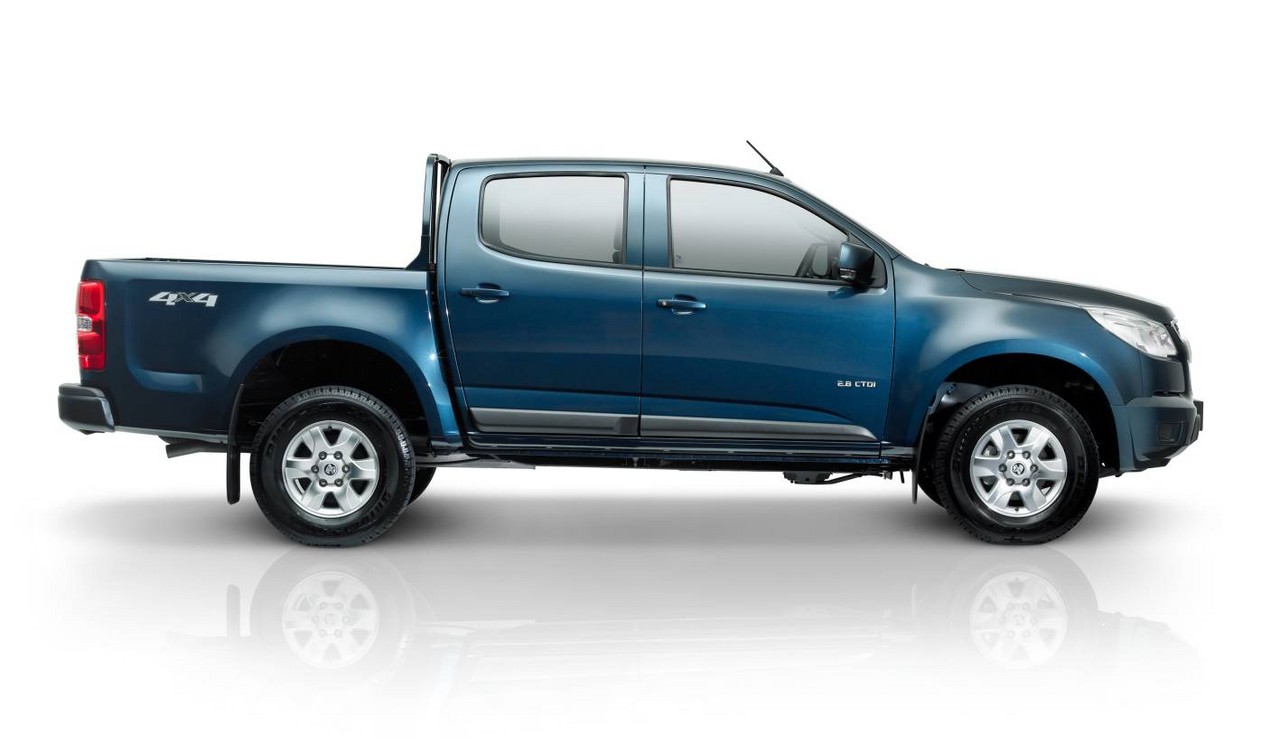Recalls: Mazda Mk.2 BT-50 cab chassis
Overview
Manufacturers, or importers, issue recalls for defects or faults which have the potential to cause injury. Generally, manufacturers will inform the original buyers if their vehicle is subject to a recall and of the steps required to remedy the defect or fault. Please note that the recalls below (if any) are for Australian-delivered vehicles only. Furthermore, the number of recalls should not be taken as an indication of a model’s reliability or its safety more generally.
Recalls: Mazda Mk.2 BT-50 cab chassis
Mazda Mk.2 BT-50 Dual Cab: rear seat may not lock into upright position #1
In October 2012, a recall was issued for dual cab Mazda BT-50 vehicles within the VIN range MM0UP0YF100100501 to MM0UP0YF100108651. In these vehicles, the rear seatback latch may not engage correctly – this could cause the rear seatback to fall forward and may pose a safety hazard to occupants. Until the recall is completed, affected vehicles should not be operated with a rearward facing child seat (PRA 2012/13331).
Mazda Mk.2 BT-50 Dual Cab: rear seat may not lock into upright position #2
In September 2016, a recall was issued for Mazda BT-50 Dual Cab vehicles because the end of the return spring for the rear folding seatback latch could break, causing the seat latch mechanism to malfunction. If this occurred, there may be an abnormal noise and the rear seatback may not be locked in the upright position; as such, it may fall forward and down when braking. If a child-restraint system was installed on the rear seat (facing rearward), the correct clearance between the child-restraint system and seatback would not be maintained if the rear seatback moved – this could result in the child restraint system not performing as intended, thereby increasing the risk of injury. For the VINs of the recalled Mazda BT-50 Dual Cab vehicles, please see PRA 2016/15628.
2011-12 Mazda BT-50: unintended downshift into first gear
In February 2017, a recall was issued for Mazda BT-50 vehicles that were available for sale in Australia from 31 October 2011 to 3 December 2012. In these vehicles, an intermittent Output Shaft Speed Sensor failure could result in an unintended downshift into first gear. If this occurred while the vehicle was being driven, it could cause an abrupt wheel speed reduction – this could cause the rear tyres to slide or lock up until the vehicle speed slowed, potentially resulting in a loss of vehicle control. For the VINs of the recalled Mazda BT-50 vehicles, please see PRA 2017/15893.
2016-17 Mazda UR BT-50: side airbag may not deploy
In September 2017, a recall was issued for Mazda UR BT-50 vehicles that were manufactured from 29 December 2016 to 4 April 2017. For these vehicles, the airbag initiators in the side airbag modules may contain an incorrect chemical mixture that could cause the airbag inflator not to initiate. As a result, the side airbags may not deploy in the event of a collision and this increased the risk of injury to vehicle occupants. For the VINs of the recalled Mazda UR BT-50 vehicles, please see PRA 2017/16331.
2015-16 Mazda UR BT-50 with manual transmission: gearshift cables may contact prop shaft
In November 2017, a recall was issued for Mazda UR BT-50 vehicles that had manual transmissions and were available for sale from 14 July 2015 to 2 February 2016. In these vehicles, the gearshift cable retaining may not be fully engaged and the gearshift cables may therefore move out of position and contact the propeller shaft. Continued contact between the gearshift cables and the propeller shaft could cause damage to both, causing difficulty changing gears or loss of drive. If this occurred, it would pose an accident risk to the vehicle occupants and other road users. For the VINs of the recalled Mazda UR BT-50 vehicles, please see PRA 2017/16410.
2016-17 Mazda UR BT-50: grass/vegetation in underbody could ignite
In December 2017, a recall was issued for Mazda UR BT-50 vehicles that were available for sale from 26 July 2017 to 31 January 2018. For these vehicles, grass or vegetation could become trapped and accumulate in the vehicle underbody area. If the grass or vegetation were to come into contact with exhaust system components, they could ignite and a pose a fire hazard. For the VINs of the recalled Mazda UR BT-50 vehicles, please see PRA 2017/16480.
2018 Mazda UR BT-50: potential loss of steering
In June 2018, recall R201806 was issued for Mazda UR BT-50 vehicles. In these vehicles, the intermediate steering shaft weld may not meet required specifications such that the steering column could detach from the steering gear. If this occurred, the driver may experience a loss of steering which would increase the risk of a collision and injury. As part of the recall, Ford dealers were to inspect the intermediate steering shaft weld and replace the shaft if the weld failed the inspection. For the VINs of the recalled vehicles, please see PRA 2018/16832.
2011-16 Mazda UP BT-50: side door may unlatch
In November 2018, recall campaign R201814 was issued for Mazda UP BT-50 vehicles that were available for sale in Australia from 21 October 2011 to 21 June 2016. In these vehicles, a locating tab inside one or more of the side door latches may break and this would prevent the door from latching and closing correctly. If the vehicle was being driven, the door could unlatch while driving and this posed a hazard to vehicle occupants and other road users. For the VINs of the recalled Mazda UP BT-50 vehicles, please see PRA 2018/17165.
2011-16 Mazda UP BT-50: side door may unlatch
In May 2019, recall campaign R201903 was issued for Mazda UR BT-50 vehicles that were manufactured from 17 June 2016 to 24 September 2018. In these vehicles,
- the front brake hose may have developed a twist during assembly – this could create a tight bend in the hose that caused the inner and outer hose layers to wear when driven over extreme bumps that required greater suspension travel. If the front brake hose failed, there could be a loss of brake fluid, increased brake pedal travel and increased stopping distances – these factors increased the risk of a collision. Furthermore, the driver should be alerted to failure of the front brake hose by illumination of the brake system warning lamp in the instrument cluster; and,
- the front brake calliper material may not meet specifications and this could cause the calliper to crack. If this occurred, there may be a loss of brake fluid and increased stopping distances – these factors increased the risk of a collision. If the front brake calliper cracked, the brake system warning lamp of the instrument cluster would illuminate.
For the VINs of the recalled vehicles, please see PRA 2019/17537.
Problems and faults: Mazda Mk.2 BT-50 cab chassis
Overview
This section identifies potential problems, causes and fixes based on the experiences of owners and repairers, online sources and technical service bulletins. This information is provided solely for reference purposes and AustralianCar.Reviews recommends that only properly qualified persons carry out repairs or modifications. Furthermore, the number of items below should not be taken as an indicator of a model’s reliability or the frequency with which they may occur.
To report a problem or fault to the AustralianCar.Reviews team, please use the Contact Us form. Note that AustralianCar.Reviews does not offer advice on automotive problems or disputes; such enquiries will not receive a reply. For vehicles purchased from dealers after 1 January 2011, please see our Australian Consumer Law fact sheet.
Mazda Mk.2 BT-50: EGR cooler failure and overheating
The Mazda Mk.2 BT-50 2.2- and 3.2-litre turbo diesel engines have exhaust gas recirculation (EGR) coolers located at the rear of the engine. The cooler has two coolant lines which enter it and are used to cool exhaust gases in the EGR system. The EGR cooler, however, is susceptible to splitting internally.
If the EGR cooler splits, coolant will leak and this loss of coolant may cause the engine to overheat and head gasket failure. In some cases, coolant may enter the exhaust manifold. However, coolant may also enter the combustion chambers of the cylinders, causing bent connecting rods or a cracked cylinder head.
It is recommended that Mazda Mk.2 BT-50 owners regularly check their coolant levels. While it has been suggested that Ford (which manufactures the BT-50) changed their initial supplier of EGR coolers, AustralianCar.Reviews has been unable to verify this. If buying a Mazda Mk.2 BT-50, it may be worthwhile to have a pressure test conducted on the EGR cooler.
Mazda Mk.2 BT-50 with 3.2-litre diesel engine: leaking diesel injectors
For the Mazda Mk.2 BT-50 vehicles with 3.2-litre turbo-diesel engines, there have been reports of the diesel fuel injectors leaking excess fuel from as little as 70,000 kilometres. Symptoms of leaking injectors include:
- A rattling noise from the engine;
- Misfires;
- A variable or surging idle; and,
- Increased fuel consumption.
If excess fuel is leaking into the cylinder, the misfires can cause damage to the surface of the pistons – the piston surface may melt or have a ‘hole’ blown in the top of it.
It is recommended that the injectors be replaced every 100,000 kilometres; while injectors can be ‘re-manufactured’, such injectors may have half the life of new injectors. When the injectors are removed, the injector seat can be re-cut to ensure an effective seal.
Mazda Mk.2 BT-50: dual mass flywheel and clutch wear
For Mazda Mk.2 BT-50 vehicles with manual transmissions, the dual mass flywheel can cause accelerated clutch wear. Symptoms of clutch wear include:
- A pulsing through the clutch pedal or shudder when accelerating from rest; and,
- Difficulty shifting from first to second gear.
To fix, the clutch must be replaced; depending on its condition, the dual mass flywheel may also require replacement.
While dual mass flywheels provide smoother gearshifts than conventional (solid) flywheels, they are not as durable and vulnerable to the high torque output of diesel engines and high loads caused by towing. For this reason, a common modification for vehicles with turbo-diesel engines is to replace the dual mass flywheel with a solid flywheel.
2013-14 Mazda UP BT-50: 6R80 transmission emits growl noise when shifting
AustralianCar.Reviews understands that Ford issued a technical service bulletin in July 2014for PX Ranger vehicles that had six-speed 6R80 automatic transmissions; this bulletin, however, is also applicable to the Mazda UP BT-50 since it has the same 6R80 transmission. According to the service bulletin, the transmission may emit a ‘growl’ or ‘buzz’ noise when shifting from 1) park to drive or 2) park to reverse – the noise was most commonly heard after the vehicle had been parked and then restarted.
Depending on the build date of the transmission, which could be determined from the transmission identification tag on the side of the transmission, the main control valve body separate plate or main control assembly was to be replaced. Specifically,
- For transmissions built from 1 August 2013 to 28 February 2014 : the main control valve body separator plate was to be replaced (part number CL3Z-7Z490-C);
- For transmissions built from 1 March 2014 to 15 March 2014: the main control assembly was to be replaced (part number FL3Z-7A100-E); and,
- For transmissions built from 16 March 2014 to 14 July 2014: the main control valve body separator plate was to be replaced (part number FL3Z-7Z490-E).
2011-14 Mazda UP BT-50 3.2 TDCi: worn heater hose and coolant leak
In late 2014, it is understood that Mazda initiated a service campaign for Mazda UP BT-50 vehicles that had 3.2-litre diesel engines. In these vehicles, the heater hose beneath the fuel filter was secured by a plastic clip; if the clip failed, the hose could rub against shielding on the fuel line. Over time, damage to the heater hose could cause coolant to leak.
As part of the service campaign, the hose would be inspected and – if in acceptable condition – would be fitted with a braided sleeve for protection and secured by additional brackets. If there was damage to the hose, it would be replaced.
Mazda BT-50: ‘limp home’ mode due to high fuel temperature
For the Ford PX Ranger and Mazda Mk.2 BT-50, there have been reports of the vehicle entering ‘limp home’ mode – which restricts engine output and vehicle speed – due to temperature readings in excess of 80 degrees Celsius from the fuel temperature sensor; in normal operation, the fuel temperature should be 40-60 degrees Celsius. In some instances, the vehicle has entered ‘limp home’ mode without diagnostic codes being logged in the powertrain control module (PCM).
The high fuel temperature readings may be caused by a sticking piston in the fuel injector pump. The injector pump has three pistons running on a camshaft and, if a piston is sticking, score marks may be visible on the camshaft. If the piston is sticking, fuel remains in the chamber of the pump and overheats, causing the high fuel temperature readings.
2011-13 Mazda UP BT-50: HVAC actuator (P1307) service campaign
In late 2013, a service bulletin was issued for Mazda UP BT-50 vehicles that were manufactured from 2011 to 2013. In these vehicles, the air conditioning system had actuators (one for each side of the vehicle) that controlled the proportion of hot and cold air. These actuators had plastic gears that could be stripped, or the actuator motor could fail. Symptoms of a faulty actuator are:
- A clicking noise on start-up or when the HVAC (heating, ventilation and air conditioning) controls are used; and,
- The air conditioning system blowing fully hot or fully cold air.
If the actuators were still working, they would be re-programmed to prevent ‘over travel’. If, however, the actuators were faulty, then they would be replaced and re-programmed.
Mazda BT-50 3.2 Diesel: oil changes and oil pump
Mazda BT-50 vehicles with 3.2-litre turbo-diesel engines have a chain-driven, variable flow oil pump that is located in the sump and increases oil flow with engine speed. When an oil change is performed, oil should not be drained for more than 10 minutes; if oil is drained for longer, oil may drain from not only the sump but from inside the oil pump assembly. If this occurs, the oil pump may not be able to re-prime itself such that the engine will not be properly lubricated on start-up. Furthermore, increasing engine speed does not re-prime the oil pump and risks serious engine damage.
When performing an oil change, the following steps should be followed:
- Remove and replace the oil filter;
- Remove the sump plug and drain the old oil;
- Put the sump plug back with a new washer;
- Add the new engine oil;
- Start the engine. The oil warning light should go off after five (5) seconds. If not, the oil pump has drained and significant work will be required to prime the pump; and,
- Re-check oil level.
Mazda Mk.2 BT-50: rattling noise from exhaust heat shield
In some Ford PX Ranger and Mazda Mk.2 BT-50 vehicles, there may be a rattling noise from the exhaust heat shield because the rivets which hold it in place have become loose. To fix, bigger rivets are fitted.




